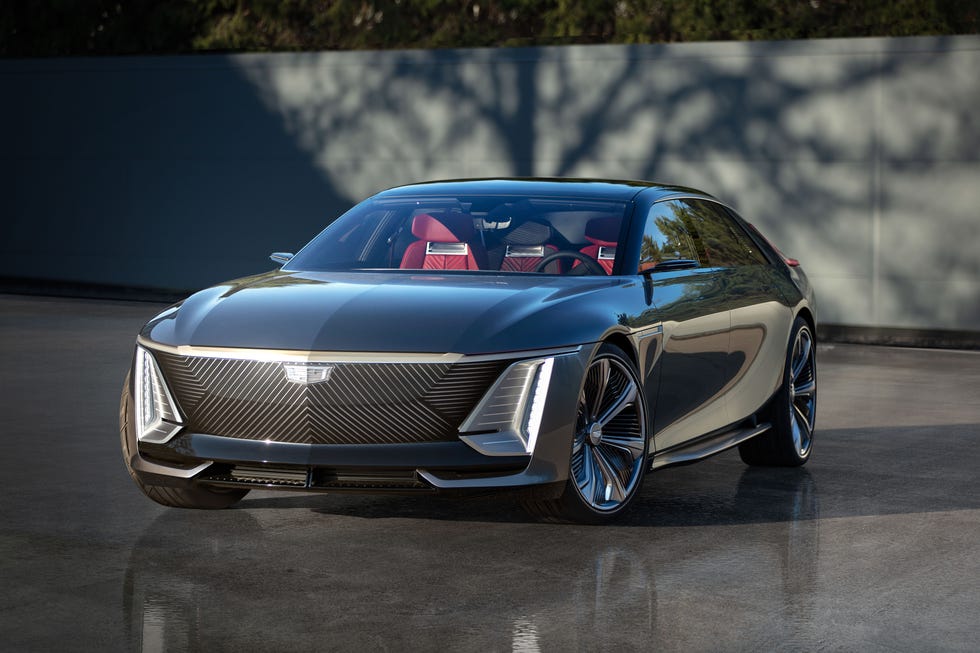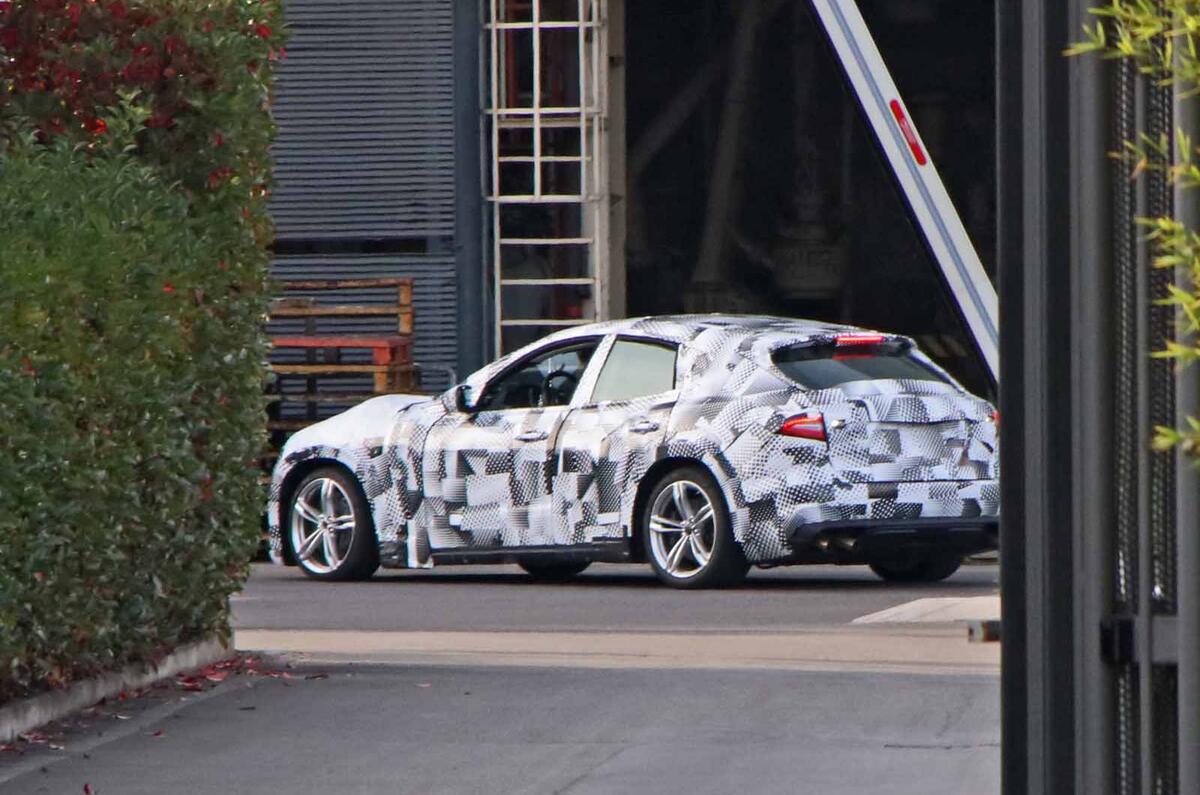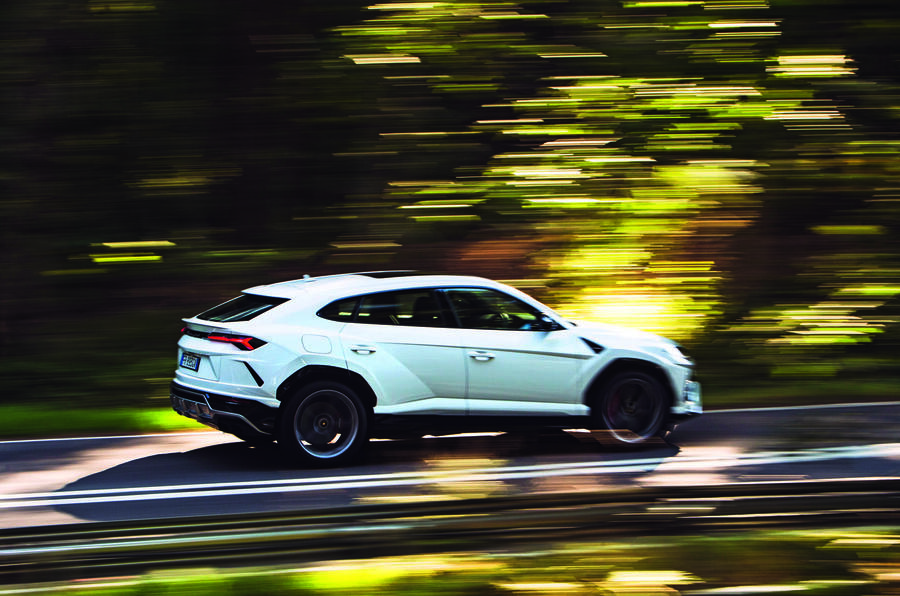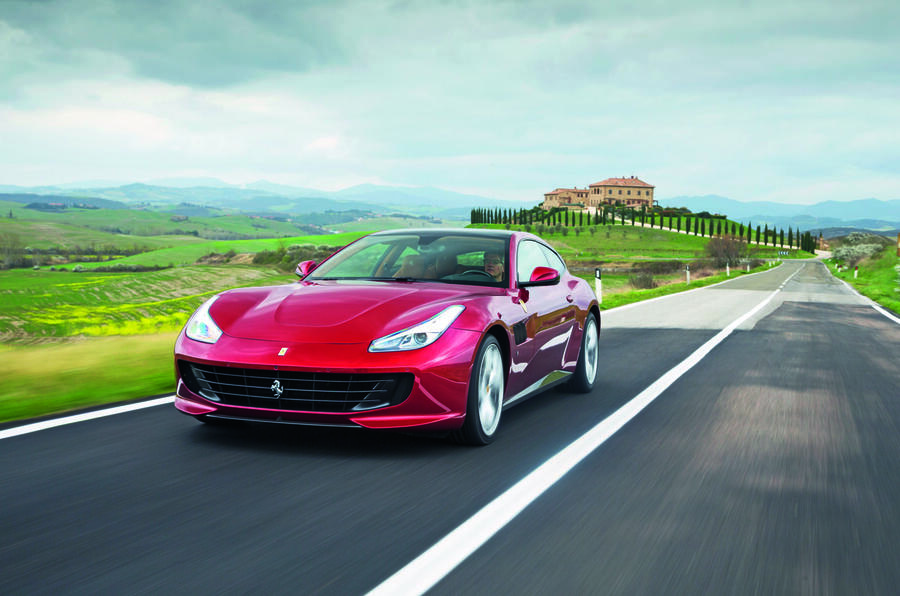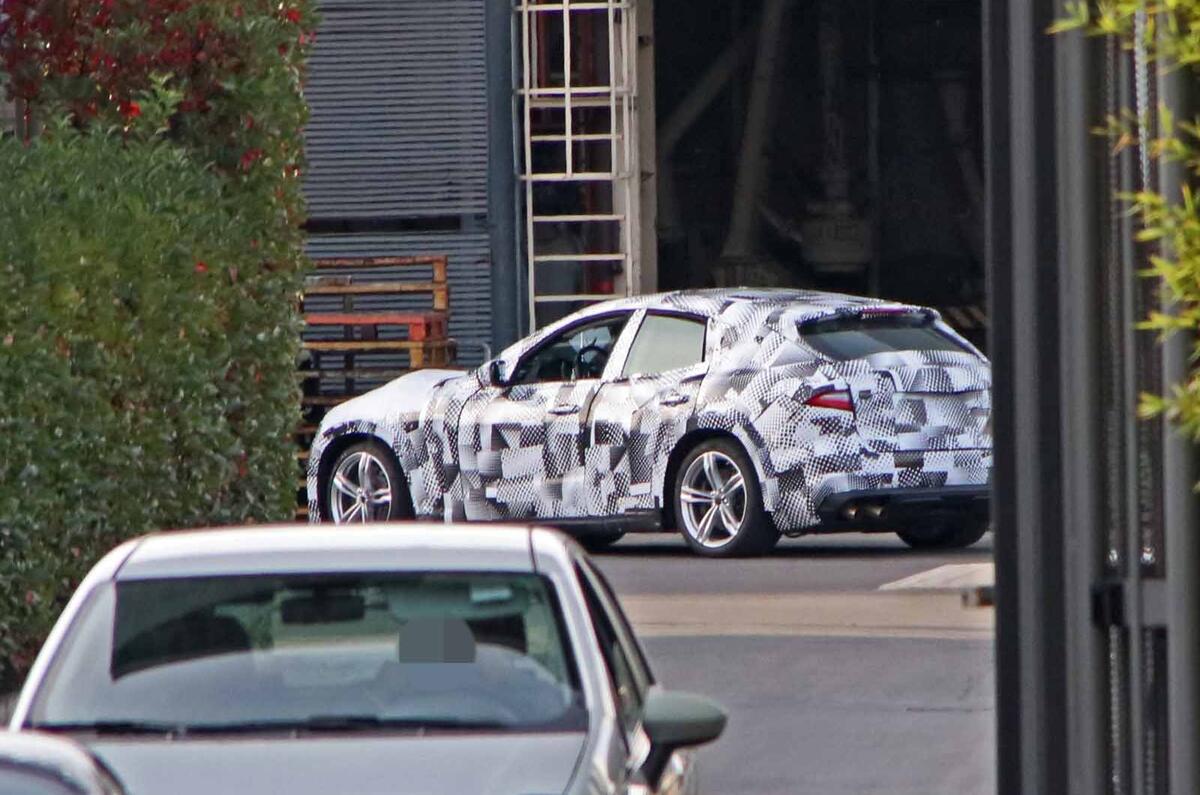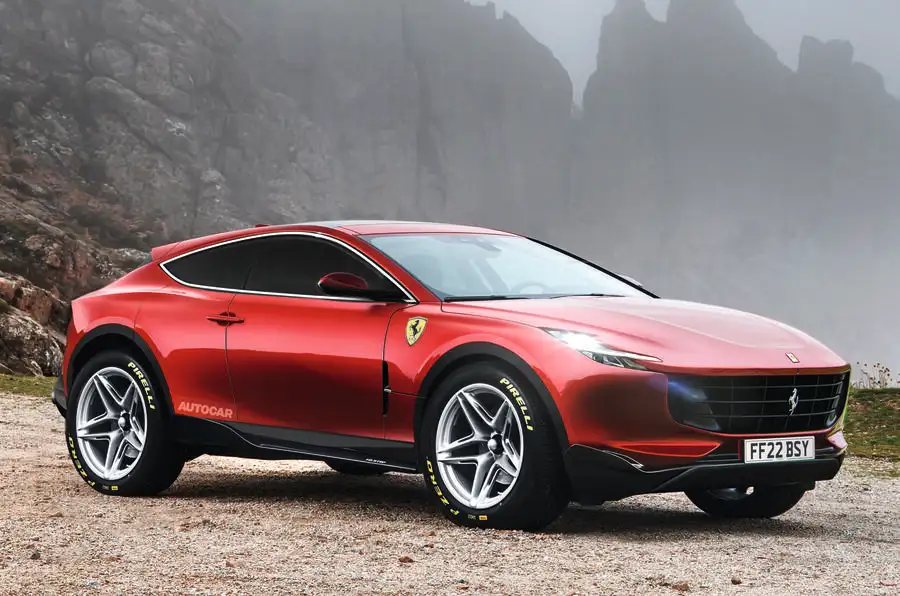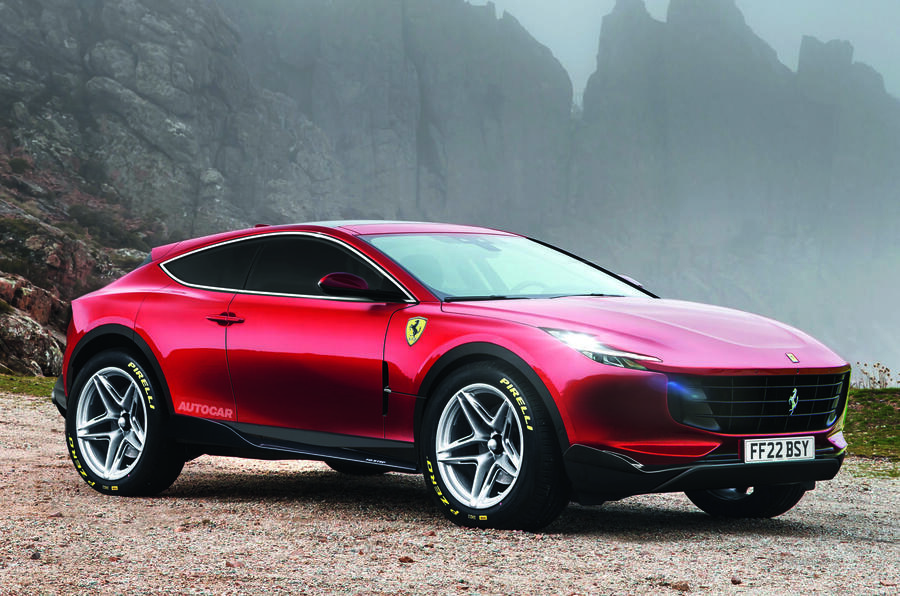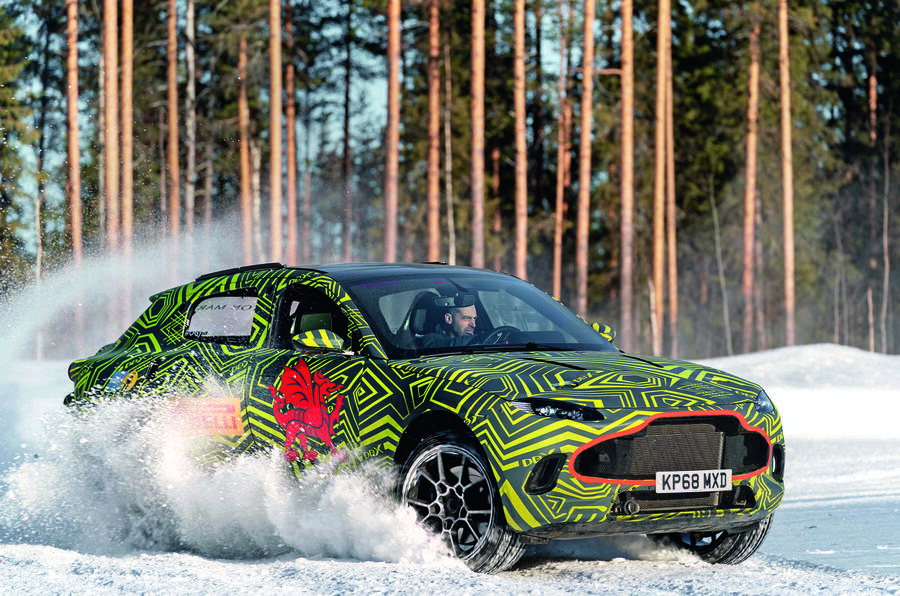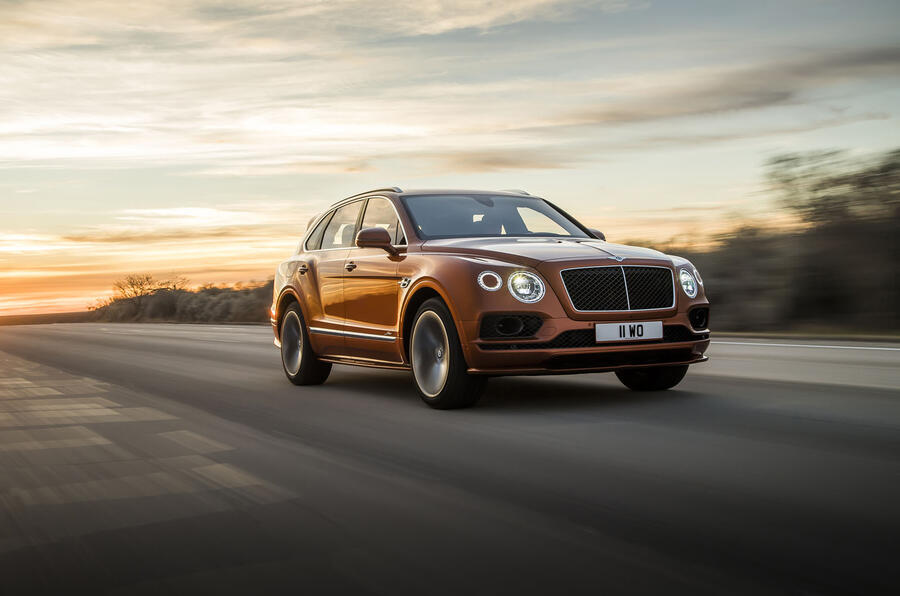Both architectures, the other supporting a traditional mid-engined
layout, are able to accommodate V6, V8 and V12 engines, with or without
hybrid assistance and with a transaxle dual-clutch automatic gearbox,
rear or all-wheel drive, two-, two-plus-two or four-seat cabins from
variable wheelbase lengths, coupé, spider or Purosangue bodystyles
(Purosangue having also been used traditionally to describe the
bodystyles of Ferrari’s big V12 front-engined GTs), and low or high
ground clearances.
From these wide-ranging parameters the SUV will take the form of a
four-seater with a length of around five metres, and its high ground
clearance is likely to be achieved through height-adjustable suspension
and an anti-roll system to allow for impressive on-road dynamics and
some off-road ability. Plug-in hybrid technology is also set to feature
as pressure grows to cut emissions, with the powertrain to be derived
from that of the new SF90 Stradale.
The new supercar, Ferrari’s first regular series-production hybrid,
mixes a 4.0-litre V8 with three electric motors, one at the rear between
the engine and gearbox and two at the front to give all-wheel drive. A
version of that system is set to feature in the Purosangue, yet it’s
more likely to be mated to a new turbocharged V6 Ferrari has in
development. A range-topping V12 version is also considered likely, as
Ferrari remains committed to the development of V12 engines.
“SF90 is a new product with so many new innovations on the car, then
we find the elements to go onto other cars,” said Leiters, on the
technology transfer from the SF90 Stradale to other models. “The
challenge [with the SUV] is a totally different one. There are some
innovations to go on, but our organisation has learned to do
innovation,” he added, in reference to the likelihood of the Purosangue
featuring innovations of its own.
The Purosangue name is also used to describe the family of new GT
models Ferrari plans to launch over the next four years, with a claimed
push towards versatility and comfort. Among them will be a replacement
for the GTC4 Lusso, whose own future doesn’t depend on the launch of the SUV.
All the Ferrari GT models, including the SUV, will get a completely
new interior layout based around what it calls an ‘eyes on the road,
hands on the street’ approach. Among the features will be a new steering
wheel design, new infotainment, a head-up display, new instruments, new
ways of operating the cabin controls, rear-seat entertainment and
improved ingress and egress.
Leiters also detailed some of the engineering challenges being faced while Ferrari develops its first SUV.
“With space, how can we ensure that there is the right easy,
ergonomic comfort on board? How to combine the sporty layout with a more
comfort-orientated design? What to do with HMI [human machine
interface]? Our HMI is driver-orientated, but how can it be more
democratic? What are the comfort features? What is a Ferrari’s pure DNA
on a car for comfort?
“It’s a challenge, an opportunity and fun. I like it very much. Some
concepts are close together, but with cars like 175 one thing we want to
do is structure the product range and have something different.”
Leiters said the two new architectures provided much greater flexibility between future Ferrari models.
“We’ve not said there definitely will be V6s or V12s but we have
foreseen it,” he said. “My job is to give the company an opportunity for
models. Then they tell us what they need from a market POV.
“In the function of different customer requirements, do we need
space? Six or eight cylinders? A long wheelbase? So we can offer V6, V8,
V12, front or mid-engined, hybrid or not, two-wheel drive or four-wheel
drive, 2+0, 2+2 or four seats; vary the wheelbase a lot. We’re able to
manage very easily and have a very low impact doing it.”
Head of design Flavio Manzoni said the designers had been working
with engineering right from the start to ensure optimum proportions for
what is set to be a controversial model for the brand.
“You start defining the design of the car in the first steps,” he
said. “In that defining phase we work with the engineers. We can
determine the proportions and the dimensions to have a very good base to
work from. That’s the case for the SUV as well. Many SUVs are
derivatives of other cars. Designers have many constraints due to the
technical base. In our case, it’s no compromise.
“If we don’t start together with engineers, defining together with
the package, it’s a problem. I praise a lot of the collaborations when
we start a new project.”
Lamborghini Urus: Perhaps the most similar car in
concept to the high-riding Ferrari comes from its most noted Italian
competitor, Lamborghini. The polarising Urus launched last year and has
sold more than twice as much as any other Lambo so far this year – a
fact that Ferrari cannot ignore. It features a twin-turbocharged
4.0-litre V8 putting out 641bhp, enough for 0-62mph in 3.6sec and a top
speed of just under 190mph.
Aston Martin DBX: It remains to be seen how much of
an impact Aston’s first SUV will have on the swelling sector, but we’ll
get a full view of the new DBX at the end of the year. With a similar
desire as Ferrari to mix large-capacity petrol power with (eventually)
hybrid options, the DBX will be launched with a Mercedes-sourced V8 and
Aston’s own V12 as powertrain choices. It’s the British firm’s big hope
to increase volumes.
Bentley Bentayga Speed:
Rival Rolls-Royce will be more aligned with the Ferrari in pricing
terms with its Cullinan, but Bentley’s Bentayga SUV – particularly in
Speed form – is a more natural rival. With a 626bhp twin-turbocharged
6.0-litre W12 providing the propulsion and a lighter chassis honed for a
more dynamic drive, it will also be Ferrari’s reference point for
interior quality, space and long-distance comfort.
Lotus SUV:
Due at a similar time to the Purosangue, this is Lotus’s first crack at
the sports utility car formula. It’ll be far cheaper than the Ferrari,
starting below £100,000, but has a similar ethos as a truly fun-to-drive
SUV. It will make use of parent company Geely’s clout, including
underpinnings and hybrid powertrains from stablemate Volvo. A high-end
flagship could give the Ferrari a run for its money.










